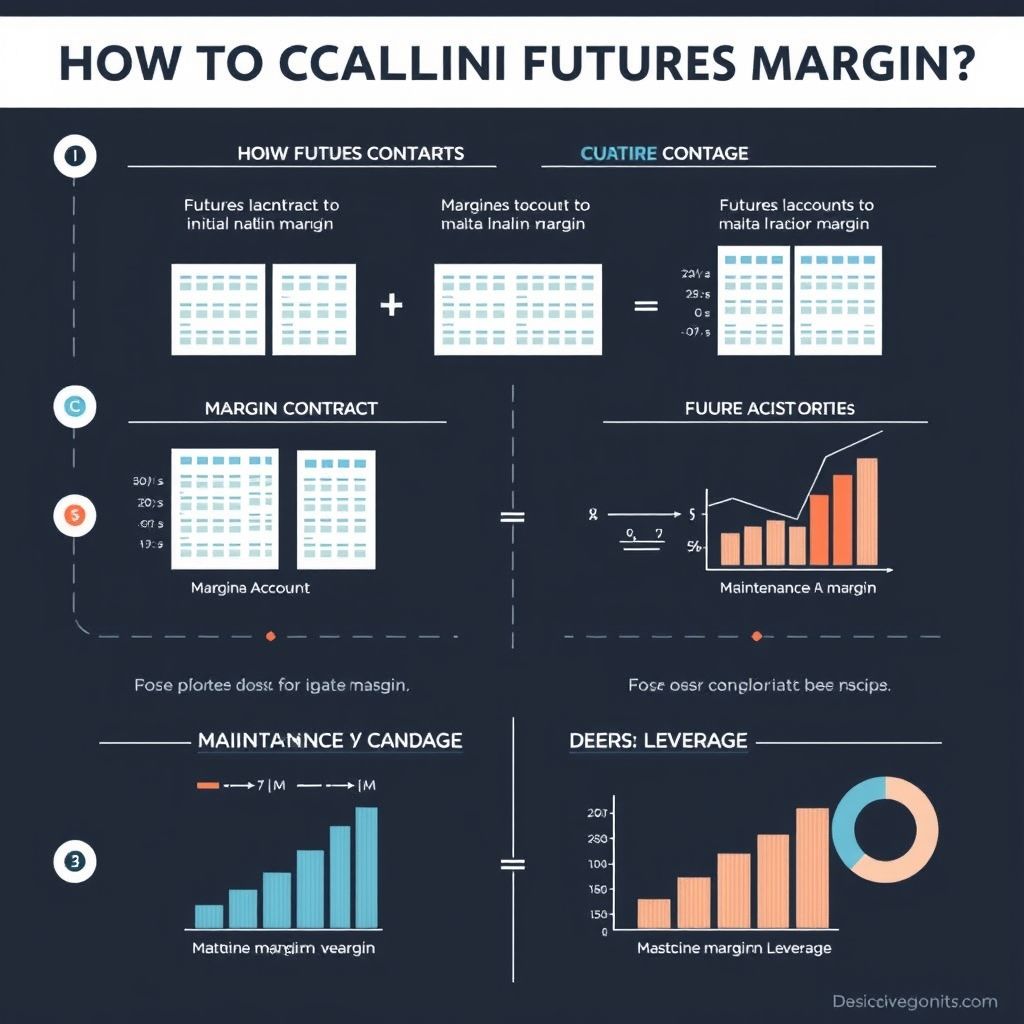How is margin calculated in futures trading?
How is Margin Calculated in Futures Trading?
Imagine youre at a bustling marketplace, eyeing a shiny antique clock. You dont have enough cash on hand, but you really want it. Instead of paying full price, you put down a small deposit—your "margin"—and agree to settle the rest later. That’s kind of what margin does in futures trading. It’s a security deposit that lets traders participate with less capital, but understanding exactly how this margin is calculated can feel like decoding a secret code.
 Unlocking the mystery of margin calculation in futures—is it as complicated as it sounds? Not really, and once you get the hang of it, you’ll see how it shapes trading strategies across various assets, from stocks and forex to cryptocurrencies and commodities.
Unlocking the mystery of margin calculation in futures—is it as complicated as it sounds? Not really, and once you get the hang of it, you’ll see how it shapes trading strategies across various assets, from stocks and forex to cryptocurrencies and commodities.
What is Futures Margin and Why Does It Matter?
Margin isn’t just a fancy term; it’s the fuel that enables leverage in futures trading. Essentially, it’s the collateral you need to open a position. The more margin you put up, the bigger the position you can control. But beware—this leverage amplifies both gains and losses, meaning understanding how your margin is calculated keeps your risk in check.
How Is Margin Calculated?
Futures margin calculation really hinges on a few key parameters: the contract size, the current price, the leverage (or initial margin rate), and maintenance margin levels. Lets unravel it with a real-world lens:
-
Initial Margin: The upfront deposit required to open a position. It’s determined by the futures exchange and is usually expressed as a percentage of the total contract value. For instance, if youre trading gold futures with a contract size of 100 grams at $60 per gram, the total value is $6,000. If the initial margin rate is 10%, then your initial margin is $600.
-
Maintenance Margin: This is the minimum equity you need to keep your position open. If your account balance dips below this threshold, youll face a margin call—meaning you have to add funds or close positions to stay in the game.
-
Leverage Effect: Leverage magnifies your exposure. Suppose a ledger shows you’re trading with 10x leverage; a $600 margin controls a position worth $6,000. This high leverage enables smaller capital to access bigger markets—think of it as the turbo boost of your trading engine.
Why Does Margin Calculation Vary Among Assets?
Different markets and assets set their margins based on volatility and liquidity. Forex typically has lower margins since currency pairs are less volatile than commodities like oil or metals. Cryptocurrencies, given their wild swings, often require higher initial margins. In stocks or indices, margin rates depend on the stability and regulation of the specific assets.
Advantages and Risks of Margin Trading in the Web3 Era
In a world where decentralized finance (DeFi) is gaining traction, margin trading is taking on a whole new dimension. Leveraging blockchain technology, traders can access non-custodial, transparent platforms that sometimes offer lower fees and more privacy. This opens the door to diversified asset classes—cryptos, synthetic indices, or even tokenized commodities.
But it’s not all moonshots—cryptocurrency markets are volatile, making margin calls more frequent, and leverage more dangerous. Still, with advanced charting and AI-driven analysis tools, traders are better equipped to manage risks. A prudent approach involves setting stop-loss orders, understanding underlying volatility, and not overextending.
Future Trends: Smarter, Safer, More Decentralized
The future of margin calculation and trading is trending toward smarter, more automated systems. Smart contracts on blockchain, for example, can enforce margin rules automatically, reducing human error. AI algorithms analyze multiple data points—from news feeds to market sentiment—to optimize entry and exit points, all while safeguarding your margin levels.
Despite these advancements, challenges persist: security vulnerabilities in DeFi platforms, regulatory uncertainties, and the need for robust infrastructure. Yet, the hype around decentralized platforms and AI-driven trading is unmistakable—they’re reshaping how margins are calculated, managed, and optimized.
Why Margin Matters—A New Frontier in Trading
In a fast-changing financial landscape, understanding how your margin is calculated isn’t just about crunching numbers; it’s about controlling your destiny as a trader. With the right knowledge and the latest tools, margin trading can amplify your potential—if you’re cautious and savvy.
Ready to step into the future of trading? Embrace the technology, leverage smart contracts and AI, and see how margin calculation evolves as your gateway to smarter, safer investments. After all, in the realm of futures trading, knowledge really is your best leverage.
Unlocking the mystery of margin calculation in futures—is it as complicated as it sounds? Not really, and once you get the hang of it, you’ll see how it shapes trading strategies across various assets, from stocks and forex to cryptocurrencies and commodities.